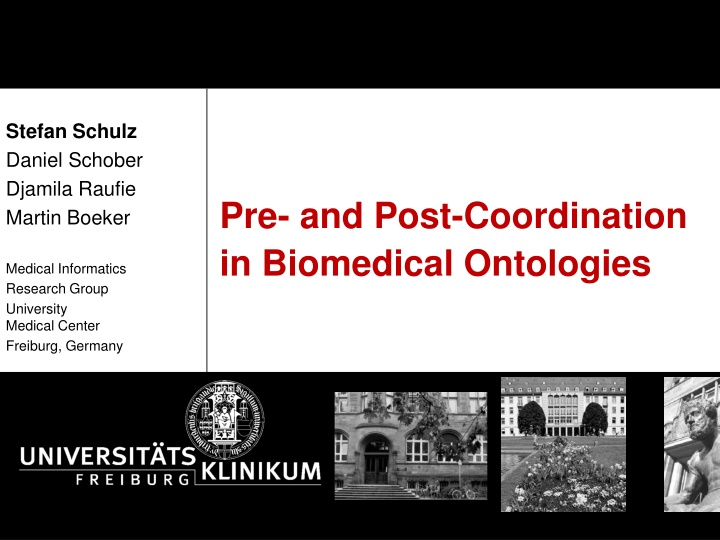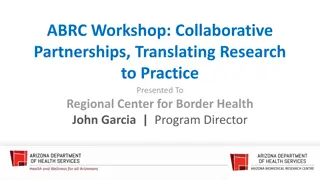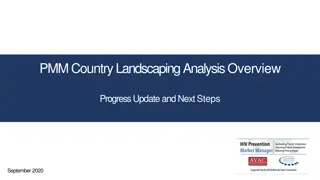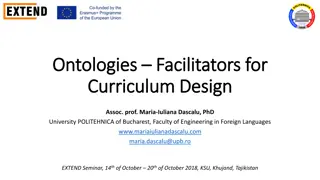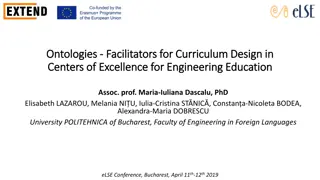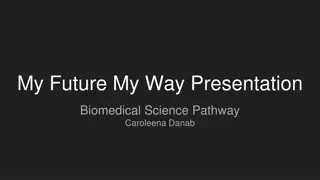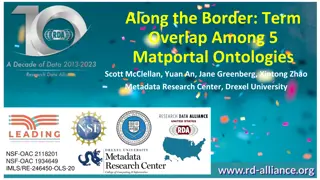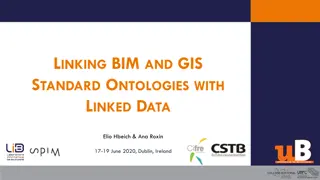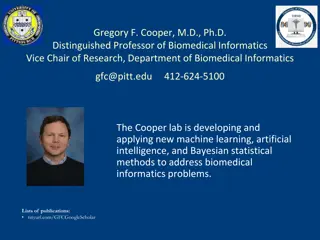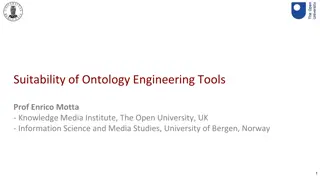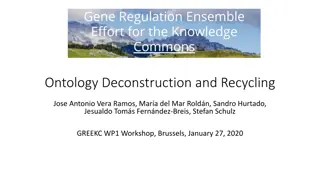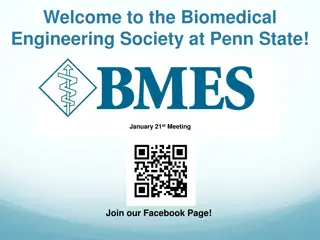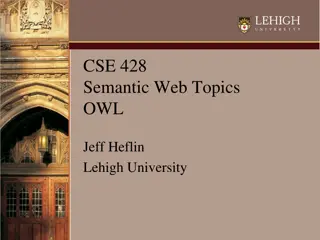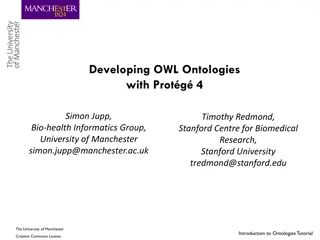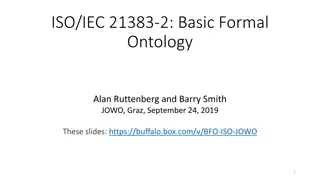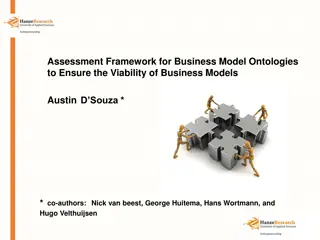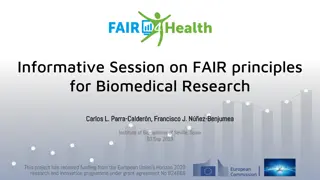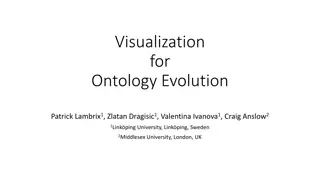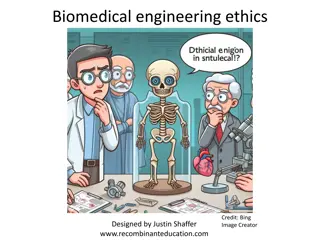Pre- and Post-Coordination in Biomedical Ontologies
The presentation discusses the principles of compositionality and the challenges of pre- and post-coordination in biomedical ontologies. It explores the benefits of using simple description logics like OWL-EL to manage terminology inconsistencies and ambiguity.
Download Presentation

Please find below an Image/Link to download the presentation.
The content on the website is provided AS IS for your information and personal use only. It may not be sold, licensed, or shared on other websites without obtaining consent from the author.If you encounter any issues during the download, it is possible that the publisher has removed the file from their server.
You are allowed to download the files provided on this website for personal or commercial use, subject to the condition that they are used lawfully. All files are the property of their respective owners.
The content on the website is provided AS IS for your information and personal use only. It may not be sold, licensed, or shared on other websites without obtaining consent from the author.
E N D
Presentation Transcript
Stefan Schulz Daniel Schober Djamila Raufie Martin Boeker Pre- and Post-Coordination in Biomedical Ontologies Medical Informatics Research Group University Medical Center Freiburg, Germany
Freges Principle Compositionality: The meaning of a complex expression is determined by its structure and the meanings of its constituents Hip = + Fracture of the hip Fracture
Degrees of Coordination Coding, Annotation, using terminologies and ontologies Fracture Fracture of the Right Hip Fracture Hip Right Hip Right Post-coordination Pre-coordination
Degrees of Coordination Ontology Maintenance Retrieval Post-coordination Pre-coordination
Degrees of Coordination user- friendliness one-click coding Post-coordination Pre-coordination
Limits of precoordination Combinatorial explosion Example: codes for burns: with 200 different sites with 4 different degrees with / without loss of tissue with / without infection with 5 different mechanisms 16 000 codes If also one code for adjacent sites (e.g burn of wrist and forearm ) >> 100 000 codes
Biomedical Terminologies FMA GALEN Read Codes CCAM MeSH ICNP GO SNOMED CT ICD- 10 SNOMED INT. Post-coordination Pre-coordination
Problem with compositional terminologies D5-46210 Acute appendicitis Equivalence between synonymous expressions cannot be automatically checked D5-46100 G-A231 Appendicitis Acute Lack of relations and nesting of expressions: creates ambiguity M-41000 G-C006 T-59200 Acute inflammation In Appendix Nonsensical compositions possible G-A231 M-40000 G-C006 T-59200 Acute Inflammation In Appendix
Solution: simple description logics(OWL-EL) Appendicitis equivalentTo Inflammation and hasLocation some Appendix Equivalence between synonymous expressions can be automatically checked AcuteAppendicitis equivalentTo AcuteInflammation and hasLocation some Appendix Relations and nesting of expression AcuteAppendicitis equivalentTo (Inflammation and hasQuality some Acute) and hasLocation some Appendix Nonsensical compositions still possible AcuteKidmonia equivalentTo (AcutePneumonia and hasLocation some Kidney)
Observations Most modern biomedical ontologies exhibit a mixture of precoordinated classes with classes for postcoordination Classification of expressions of different degrees of compositionality supported by inexpressive DL (OWL-EL) equivalence: equivalentTo ( ) subsumption: subClassOf ( ) conjunction: and ( ) existential restriction: some ( ) Persisting deficits: user-friendly guidance for post-coordination by constraints and patterns plausibility checking of post-composed expressions relies on users domain knowledge knowledge-intensive reasoning services not supported by OWL-EL
Case study: pneumonia ontology Anatomical localization: the parts of the lung and its tissues Disease course acute or chronic Etiological characteristics infections, physical, chemical... Pre-existing conditions, of which the pneumonia is a complication Environmental characteristics Where it was acquired (community or hospital)
OWL-EL axioms using BioTop upper domain ontology: http://purl.org/biotop Pneumonia equivalentTo Inflammation and hasParticipant some LungTissue LobalPneumonia equivalentTo Pneuonia and hasLocus some LungLobe AcutePneumonia equivalentTo Pneumonia and bearerOf some AcutenessQuality BacterialPneumonia equivalentTo Pneumonia and hasAgent some BacteriaPopulation
Limitations OWL-EL does not prevent to define, e.g. Pneumomia located in the kidney Pneumomia being simultaneously acute and chronic Pneumonia caused by elephants Pneumonia as a complication of ingrown nail Open world semantics + OWL-EL: no constraints Needed: Disjoint categories, e.g. for enforcing non-overlapping of toplevel categories, e.g. Pneumonia is a process, therefore it is no material object Allowed values, e.g. caused-by restricted to micro- organisms
Pneumonia: pre-coordination requirements Taxonomic hierarchies: BacterialPneumonia subClassOf BacterialInflammation Relation axioms and hierarchies TransitiveProperty (partOf) partOf subPropertyOf hasLocus Mereotopologic axioms Pneumonia equivalentTo Inflammation and hasParticipant some LungTissue LungTissue subClassOf partOf some Lung Pneumonia subClassOf hasLocus some Lung
Pneumonia post-coordination requirements Support and guide user to compose own post- coordinated compositions Post-coordinated expressions to be Valid: allow only meaningful compositions prevent nonsensical coordinations Expressive: enable user to create unambiguous, clearly delineated compositions Reliable: support for compositions that are consistent between different modelers Post-coordination needs to restrict users choices embed coordination axioms, provided by ontology design patterns and upper level ontologies
Sample pattern (I) Disease processes can only be located in anato- mical regions that have a certain type of tissue: Pneumonia subClassOf hasLocus only (locusOf some LungTissue) Tissues only occur in certain body parts / regions LungTissue subClassOf hasLocus some Lung LungTissue subClassOf hasLocus only (locusOf some Lung) Organs are located in certain regions that do not overlap Lung subClassOf hasLocus only (locusOf some Thorax). Thorax subClassOf locusOf only (not hasLocus some (Abdomen or Extremity)
Sample patterns (II) A secondary disease is a pathological process which is the realization of a pre-existing disposition which inheres in a pathological structure, which exists as congenital disorder or outcome of a former pathological process Pneumonia subClassOf only realizationOf (PathologicalDisposition and only inheresIn (LungInfarction or LungEdema)) A disease typically predisposes an organism to develop signs and symptoms Pneumonia subClassOf hasOutput some (PathologicalStructure and hasLocus some (Organism and bearerOf some (PathologicalDisposition and only hasRealization (Cough or Chills or Fever))))
Additional post-coordination pattern examples A secondary disease is a pathological process which is the realization of a pre- existing disposition which inheres in a pathological structure, which exists as congenital disorder or outcome of a former pathological process lung infarction or lung edema as a cause of pneumonia (second disease) Pneumonia subClassOf only realization-of (PathologicalDisposition and only inheresIn.(LungInfarction or LungEdema)) A pneumonia process predisposes an organism to develop signs and symptoms like fever, chills, or cough Pneumonia subClassOf hasoutput.some (PathologicalStructure and hasLocus Organism and bearer-of some (PathologicalDisposition and only has-realization. Cough or Chills or Fever)) 15.02.2025 20
Conclusions Pre-coordinated ontologies: subsumption, class inclusion, equivalence, existential restrictions (OWL-EL) Support for post-coordination user guidance: value restrictions, negation, disjunction (OWL RL) Sources: Expressive top level ontologies Ontology design patterns Problem: expressiveness lack of scalability Possible solutions: use EL functionality only for reasoning, additional RL functionality for e.g. GUI support, use weak negation, new reasoners
References / Acknowledgements Pneumonia.owl: http://purl.org/biotop/src/pneumonia.zip BioTop.owl: http://purl.org/biotop/biotop.owl DebugIT project (EU FP7): http://www.debugit.eu
